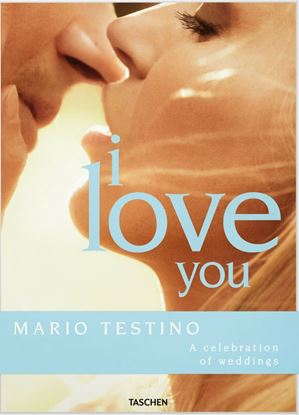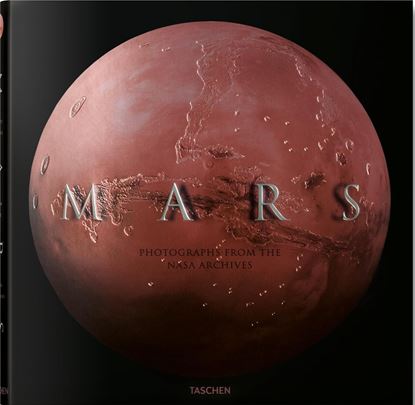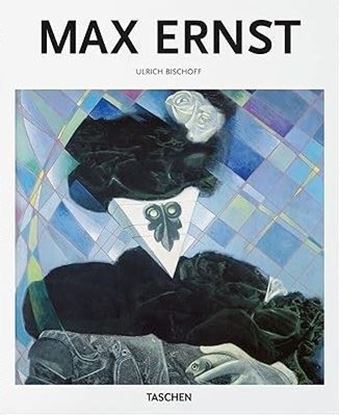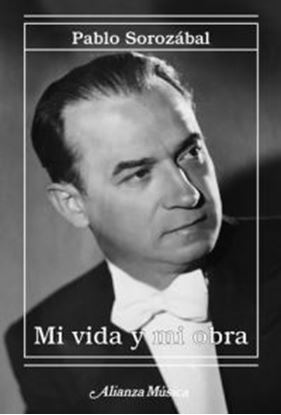

MARINA PEREZ SIMAO
The first international monograph of one of the most exciting painters working in Brazil today, Marina Perez Simão.
Marina Perez Simão (1981–) is an internationally recognized contemporary artist who uses a variety of techniques, such as collage, drawing, watercolor, and oil painting, as starting points to combine interior and exterior landscapes. She composes visual journeys that sometimes traverse the unknown, the abstract, and the nebulous, but which also include visions and memories.
Simão’s work is held in several public collections worldwide, including the Musée d’Art Moderne et Contemporain, in Saint-Étienne, France; the Ekard Collection in the Netherlands; the Samdani Art Foundation in Bangladesh; the Sifang Art Museum in China; the Speed Art Museum in Kentucky; and the Dallas Museum of Art, among others.
2,995
MARIO TESTINO. I LOVE YOU (FO) (INT)
En I Love You, Mario Testino presenta un homenaje fotográfico a las bodas. El comienzo de una vida nueva, que es también una culminación y una promesa pública, capturado desde un punto de vista fotográfico único que muestra la belleza no solo en la emoción y la tradición, sino también en la intimidad de la alegría compartida.
Con ensayos de la ilustre diseñadora de moda Carolina Herrera y del experto en fiestas Riccardo Lanza, el libro rastrea los recuerdos de Testino de muchos momentos icónicos y muchos otros desconocidos capturados en contextos familiares y de estrecha amistad. Gracias a un nivel de acceso inigualable, Testino desvela lo secreto, lo tierno, lo salvaje y lo festivo de este tipo de celebraciones, algunas de las cuales pueden considerarse las uniones más célebres de las últimas cuatro décadas.
I Love You es un homenaje a las bodas ya todo lo que ellas comprenden. Una declaración de amor y un acercamiento al corazón de las novias que se preparan, a ritos entre amigos y al entusiasmo de fiestas extraordinarias Cada imagen muestra las fantasías únicas sobre las nuevas vidas que están a punto de comenzar.
4,500
MARS. PHOTOGRAPHS FROM NASA (FO) (INT)
Early astronomers, drawn to Mars's fiery glow in the night sky, named the planet after their god of war. In the centuries since, Mars has captivated humankind as a source of endless speculation and a beacon of hope for its potential habitability. Through six decades of NASA’s pioneering research missions, the mysteries of the red planet have been gradually uncovered, revealing a world not so unlike our own that likely once supported life.
4,500
MAX ERNST (BA-ART) (E)
Max Ernst (1891-1976) transformó todo lo que tocó con una originalidad artística sin igual. Se convirtió en una de las figuras más importantes del dadaísmo y del surrealismo que ensanchó las fronteras del arte y rompió con la visión limitada de la cultura de su tiempo. Impulsado por la reacción a los horrores de la Primera Guerra Mundial, se convirtió en un pionero del movimiento dadaísta. La cancelación de la famosa exposición dadá en Colonia por “obscenidad” llevó a Ernst a pasar el resto de su vida en París, donde entró en contacto con los surrealistas.Por encima de todo, Ernst destaca por la variedad de estilos y técnicas que empleó. Su obra abarca desde la pintura, el dibujo y la escultura, pasando por textos y escenografías, hasta novelas de collage y el desarrollo de su propia técnica de frottage. Durante la Segunda Guerra Mundial, Ernst, como muchos de sus colegas, se convirtió en un “extranjero indeseable” y se vio obligado a emigrar, aunque regresó a Francia después de la guerra. Siguió desarrollando una carrera que abarcó décadas, y en 1954 recibió el Gran Premio de Pintura en la Bienal de Venecia.Este libro es un viaje por la magia, la intensidad y la fantasía. Es una puerta de entrada a la mente y el mundo complejo de Max Ernst.
1,350
METODO PARA ESCRIBIR UN GUION
Este libro propone una aproximación personal al proceso completo de escritura de un guión de cine sólido, complejo, formalmente potente y que refleje además una voz propia y distinta. Con su dilatada experiencia en el campo de la docencia y los talleres de escritura, Tomás Aragay expone de forma clara, ordenada y pedagógica las herramientas, preguntas y dispositivos que constituyen la metodología para escribir un guión. A traves de un análisis concienzudo de dos películas premiadas y de alto valor nutritivo (Truman, de Cesc Gay, de cuyo guión es coautor, y Plácido, de Berlanga), Metodo para escribir un guión cinematográfico es un texto útil tanto para principiantes y estudiantes como para profesionales que quieran revisar su forma de trabajar. Y tambien para cualquier aficionado que tenga interes en entender los entresijos de la escritura del guión de cine.
1,200
MI VIDA Y MI OBRA (OF2)
Fue Sorozábal el músico más popular en el Madrid de mitad del siglo XX.
Su música tenía gancho, era chispeante, castiza, muy madrileña.
Era además original y moderna en su momento, sin que supusiera una ruptura con esa entrañable y larguísima tradición española de la zarzuela: o sea, tenía eso que hoy se busca en las generaciones nuevas de compositores sin hallarlo nunca.
El arte lírico de Sorozábal no cayó jamás en las ramplonas orquestaciones de otros músicos de zarzuela de su momento, período de franca decadencia artística del género.
Y, por si fuera poco, tenía un agudo sentido teatral en la equilibrada mezcla de elementos cómicos y de carácter, con una fuerte vena lírica, en él tocada de humana cordialidad y nostálgica ternura.
Junto a lo madrileño hay otro polo en la obra de Sorozábal, este más auténtico en su raíz: lo vasco, presente muchas veces en composiciones no teatrales para voz solista o para coro.
500













